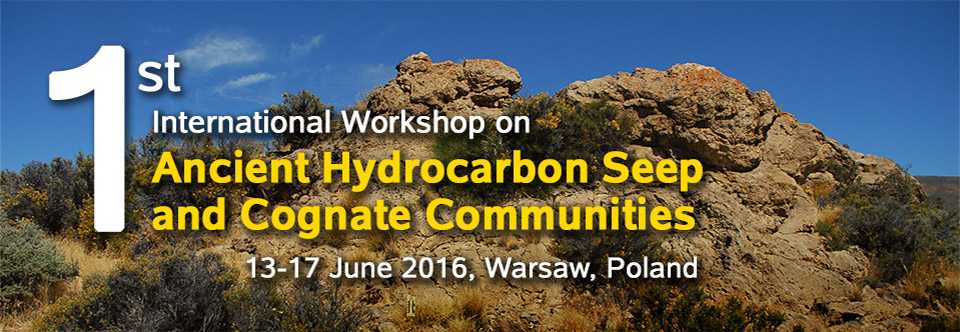
MINERALISATION OF POLYCHAETE WORM TUBES AT MODERN HYDROTHERMAL VENTS: IMPLICATIONS FOR A 440 MILLION-YEAR-OLD HYDROTHERMAL VENT COMMUNITY
Magdalena N. GEORGIEVA1,2, Crispin T.S. LITTLE1, Alexander D. BALL3, and Adrian G. GLOVER2
1School of Earth and Environment, University of Leeds, Leeds, LS2 9JT, United Kingdom; 2Life Sciences Department, Natural History Museum, London, SW7 5BD, United Kingdom; 3Core Research Laboratories, Natural History Museum, London, SW7 5BD, United Kingdom.
Corresponding author: m.georgieva@nhm.ac.uk
Polychaete tubeworms are an abundant and diverse component of modern hydrothermal vent
ecosystems. Fossilised tubes are known from ancient vent deposits dating back to the Silurian
period, ~440 million years ago, but the identification of these tubes is problematic due to the
production of morphologically similar tubes by several modern polychaete lineages, and a limited
understanding of how polychaete tubes fossilise at vents. A modern lineage of polychaete worms,
Alvinella, forms multi-layered organic tubes in the hottest and most rapidly growing areas of hydrothermal
vent chimneys. Here the tubes can be rapidly mineralised, providing a unique opportunity
to analyse how modern polychaete tubes fossilise within this setting. Here, we report on the complete
mineralisation of Alvinella spp. tubes at vent sites on the East Pacific Rise, describing in detail
the minerals that comprise these tubes, their textures, and the stages of mineralisation. The fully
mineralised Alvinella spp. tubes do not closely resemble known ancient hydrothermal vent tube
fossils, supporting molecular evidence which suggests that the alvinellids are a relatively recent
polychaete lineage. Mineralised Alvinella spp. tubes also show that micro-organisms inhabiting
the original tube surfaces can be preserved alongside the tubes, providing insights into animal-microbial
associations within the oldest known hydrothermal vent community from the Silurian aged
Yaman Kasy deposit, and thereby into the palaeoecology of ancient vent environments.
